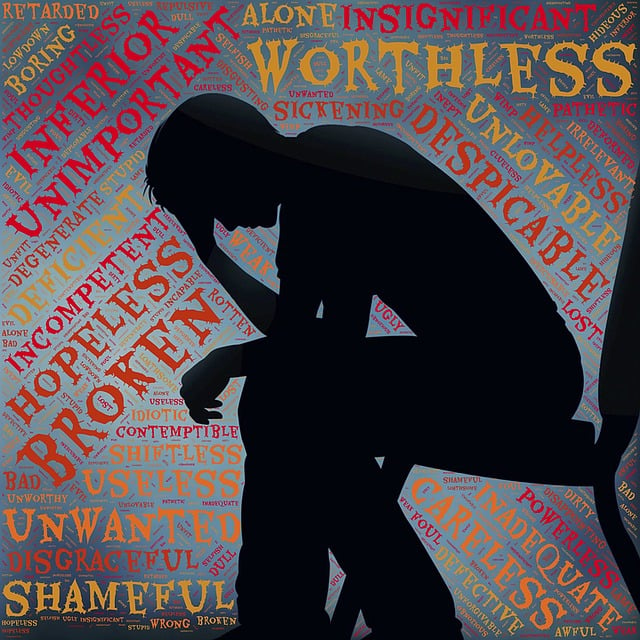Public awareness campaigns play a crucial role in supporting abuse survivors in Colorado Springs by educating the public about abuse, its signs, and recovery paths. Organizations like Colorado Springs Abuse Survivors Therapy (CSTAT) use targeted messaging, considering demographics and psychographics, to empower individuals to recognize and assist victims. These campaigns also promote mental wellness practices for both survivors and healthcare providers, fostering long-term emotional healing through tailored strategies like journaling. By prioritizing consent, privacy, and cultural competency in storytelling, CSTAT breaks down barriers and reduces stigma surrounding trauma. A strategic mix of digital platforms, traditional media, and community engagement ensures broad accessibility and direct connections. Evaluating campaign impact allows for continuous improvement, preventing burnout among supporters and fostering a more robust response to survivors' needs in Colorado Springs.
In the pursuit of enhancing public awareness about critical issues, particularly Colorado Springs abuse survivors therapy, this article delves into strategic campaign development. We explore the profound role of public education in supporting survivors, emphasizing responsible storytelling. By identifying specific target audiences, we ensure tailored messaging. The piece navigates channel selection—digital, traditional, and community engagement—for maximum impact. Moreover, it highlights the importance of measuring results and iterating for continuous improvement in Colorado Springs abuse survivors therapy.
- Understanding Public Awareness: Its Role in Supporting Survivors
- Identifying Target Audiences for Effective Campaigning in Colorado Springs
- Crafting Compelling Narratives: Sharing Survivor Stories Responsibly
- Choosing the Right Channels: Digital, Traditional, and Community Engagement
- Measuring Impact and Iterating: Ensuring Continuous Improvement in Abuse Survivors Therapy
Understanding Public Awareness: Its Role in Supporting Survivors

Public awareness campaigns play a pivotal role in supporting survivors of abuse by bringing much-needed attention to their struggles and available resources. In Colorado Springs, where Abuse Survivors Therapy is a vital service, these campaigns can make a significant impact on fostering an environment of understanding and support. By educating the public about the signs of abuse, available interventions, and recovery paths, awareness initiatives empower individuals to recognize and assist those in need.
Furthermore, these campaigns contribute to building resilience within communities by promoting mental wellness practices such as burnout prevention strategies for healthcare providers and resilience-building exercises. Encouraging survivors to engage in activities like journaling can provide a valuable outlet for processing emotions and experiences, fostering healing and growth. This holistic approach ensures that public awareness efforts not only support immediate needs but also contribute to long-term mental health and well-being.
Identifying Target Audiences for Effective Campaigning in Colorado Springs

Identifying target audiences is a crucial step in designing effective public awareness campaigns for Colorado Springs. By understanding the demographics and psychographics of the intended audience, organizations can tailor their messages to resonate with those most affected by issues like abuse survivors therapy. In this vibrant city, diverse communities call for tailored approaches; considering age groups, cultural backgrounds, and socioeconomic status ensures that support reaches all who need it. For instance, campaigns focused on mental wellness might target adolescents and young adults grappling with stress and anxiety, while initiatives promoting positive thinking could engage older individuals seeking purpose and self-esteem improvement.
Colorado Springs, known for its rugged landscape and lively tapestry of communities, benefits from targeted messaging that acknowledges unique challenges. Survivors of abuse often face barriers to seeking therapy due to stigma or lack of awareness; thus, campaigns must be inclusive and sensitive to diverse needs. By employing strategies that appeal to various interests and concerns, public health initiatives can encourage open conversations about mental wellness, fostering a supportive environment for those rebuilding their lives.
Crafting Compelling Narratives: Sharing Survivor Stories Responsibly

Crafting compelling narratives is a powerful tool in public awareness campaigns, especially when it comes to sensitive topics like abuse and survival. Sharing survivor stories can be an effective way to educate and empathize with audiences, but it must be done responsibly. At Colorado Springs Abuse Survivors Therapy, we understand the importance of storytelling as a means to break down barriers and reduce stigma surrounding trauma.
When presenting survivor narratives, it’s crucial to prioritize consent and privacy. Many survivors are hesitant to share their stories publicly due to fear of retraumatization or re-disclosure. Therefore, seeking permission and maintaining confidentiality are essential steps in ensuring the story is told with integrity. Additionally, providing a balanced perspective by including insights from healthcare providers trained in cultural competency can add depth and context, fostering a more nuanced understanding of the survivor’s experience and emphasizing available support systems like those offered through effective stress management techniques and reduction methods.
Choosing the Right Channels: Digital, Traditional, and Community Engagement

In developing public awareness campaigns, carefully selecting the right communication channels is paramount to reaching and engaging your target audience effectively. For issues like abuse survivors’ therapy in Colorado Springs, a multi-pronged approach can maximize impact. Digital platforms offer unparalleled accessibility and the ability to target specific demographics, making them ideal for spreading sensitive information about available services and support systems. Traditional media, such as local newspapers and radio stations, still hold significant sway, especially among older populations, ensuring that critical messages reach diverse audiences.
Community engagement is another vital component. Organizing events, workshops, or informational sessions in community centers, schools, and other public spaces facilitates direct interaction with potential survivors and increases the personal connection to the cause. This approach also enables mental health professionals to conduct risk assessments for those experiencing trauma (Risk Assessment for Mental Health Professionals) and offer immediate stress management techniques (Stress Management). By combining these channels, organizations like Colorado Springs Abuse Survivors Therapy can ensure their campaigns are inclusive, informative, and tailored to meet the unique needs of their community.
Measuring Impact and Iterating: Ensuring Continuous Improvement in Abuse Survivors Therapy

Evaluating the effectiveness of public awareness campaigns is a crucial step in enhancing Colorado Springs Abuse Survivors Therapy. By measuring impact, organizations can understand the reach and resonance of their messaging, identifying what works best to raise awareness and support survivors. This data-driven approach allows for continuous improvement, ensuring that resources are allocated effectively.
Iterating based on these findings is essential for sustaining momentum. For instance, successful communication strategies can be replicated and adapted for broader outreach. Similarly, recognizing the importance of emotional well-being promotion techniques can help prevent burnout among supporters and advocates, enabling them to better assist abuse survivors in the long term. This cyclical process of assessment and adaptation fosters a more robust and responsive support system in Colorado Springs.
Public awareness campaigns play a pivotal role in supporting survivors of abuse, especially in communities like Colorado Springs. By understanding the target audiences, crafting compelling narratives, and utilizing the right communication channels, we can significantly impact public perception and encourage support for victims. Measuring campaign effectiveness and iterating based on feedback ensures continuous improvement in Colorado Springs Abuse Survivors Therapy, fostering a safer and more compassionate environment for all.














